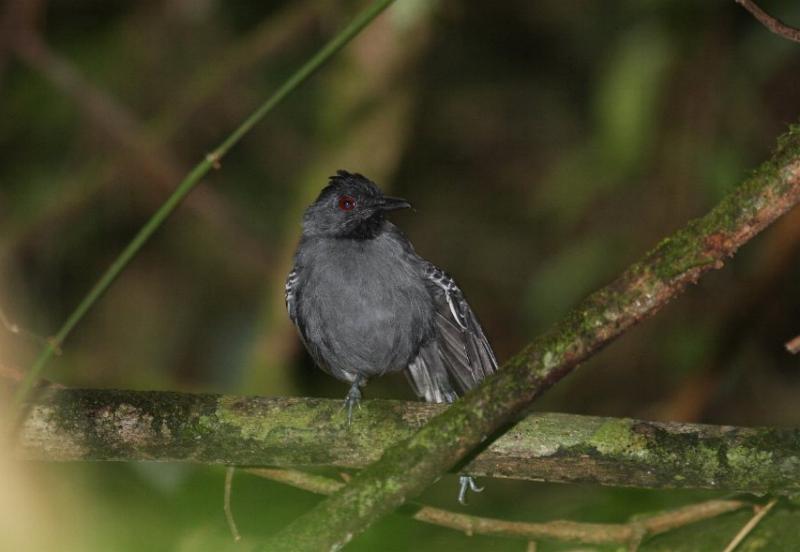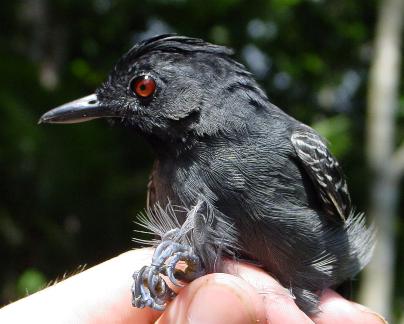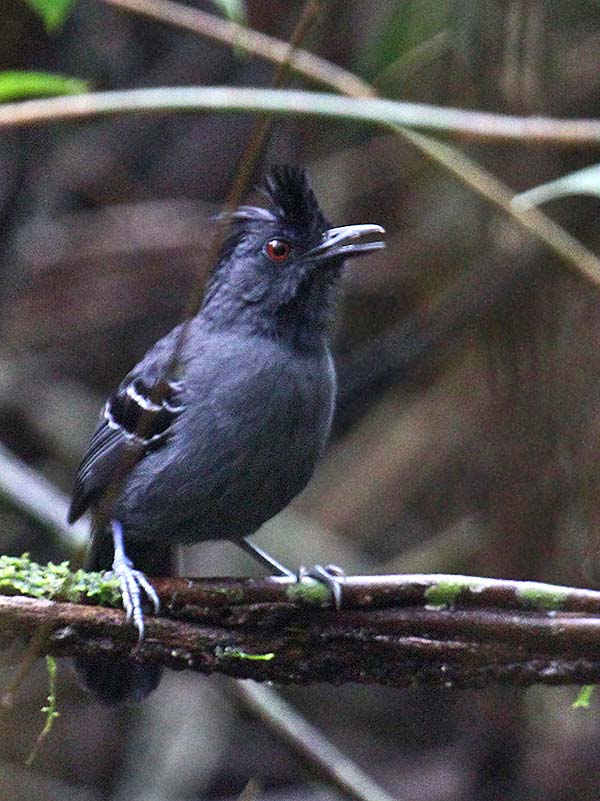 Black-headed Antbird (Percnostola rufifrons)
Black-headed Antbird (Percnostola rufifrons)
 Black-headed Antbird (Percnostola rufifrons)
Black-headed Antbird (Percnostola rufifrons) |
 |
| Pictures (click on them to enlarge) | ||
|---|---|---|
 © John S. Dunning |  © Carl Beel |  © Ward Vercruysse |
 © Brian O'Shea |  © Martin Reid |
| The Black-headed Antbird is often found low in the forest, especially on the Brownsberg. A recording of the sound of the black-headed antbird was made by Otte Ottema te Onverwacht in 2005 and another recording was made by Jan Hein Ribot on the Brownsberg in 2006. Photo of a female Black-headed Antbird, made by J.S. Dunning. Then three photos of a male (grey with black on its head and on its chin and some white fringes on its shoulders), made by Carl Beel and Ward Vercruysse on the Brownsberg in 2009 and the third one by Brian O'Shea in the Ralleigh Falls nature reserve in December 2003. |
| Birdsounds (click on them to listen) | ||
|---|---|---|
| Sound recording of a Black-headed Antbird © Jan Hein Ribot | Sound recording of a Black-headed Antbird © Otte Ottema, bird guide |
|
|
||||||||||||||||||||||||||||||||||||||||||||
| Observations through the year | Observations of breeding through the year |
|---|---|
| The 465 reported observations of this bird in Suriname, mainly for the last 50 years up to 2018, have been grouped by month. More birds on one day are counted as one observation. Of course, if the graph should depict the total number of birds seen, the differences between the months could be much more pronounced. | The reported breeding observations of this bird in Suriname. Most observations are about nest with eggs, some about fledglings, or feeding at a nest or the building of a nest. Of the about 5000 nests and eggs found for all species together, about 1/3 comes from the egg collection of Penard between 1896 and 1905. For some reason most collecting then was done in the first half of each year, so the shown distribution does not necessarily reflect the actual breeding preferences. The main dry season in Suriname is reckoned to be from half August to the end of November, the main wet season from half April to half August, but the the timing of begin and end does vary from year to year. Around March a second dry season often occurs. |